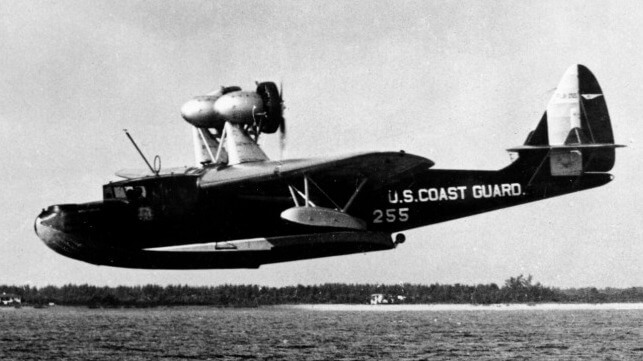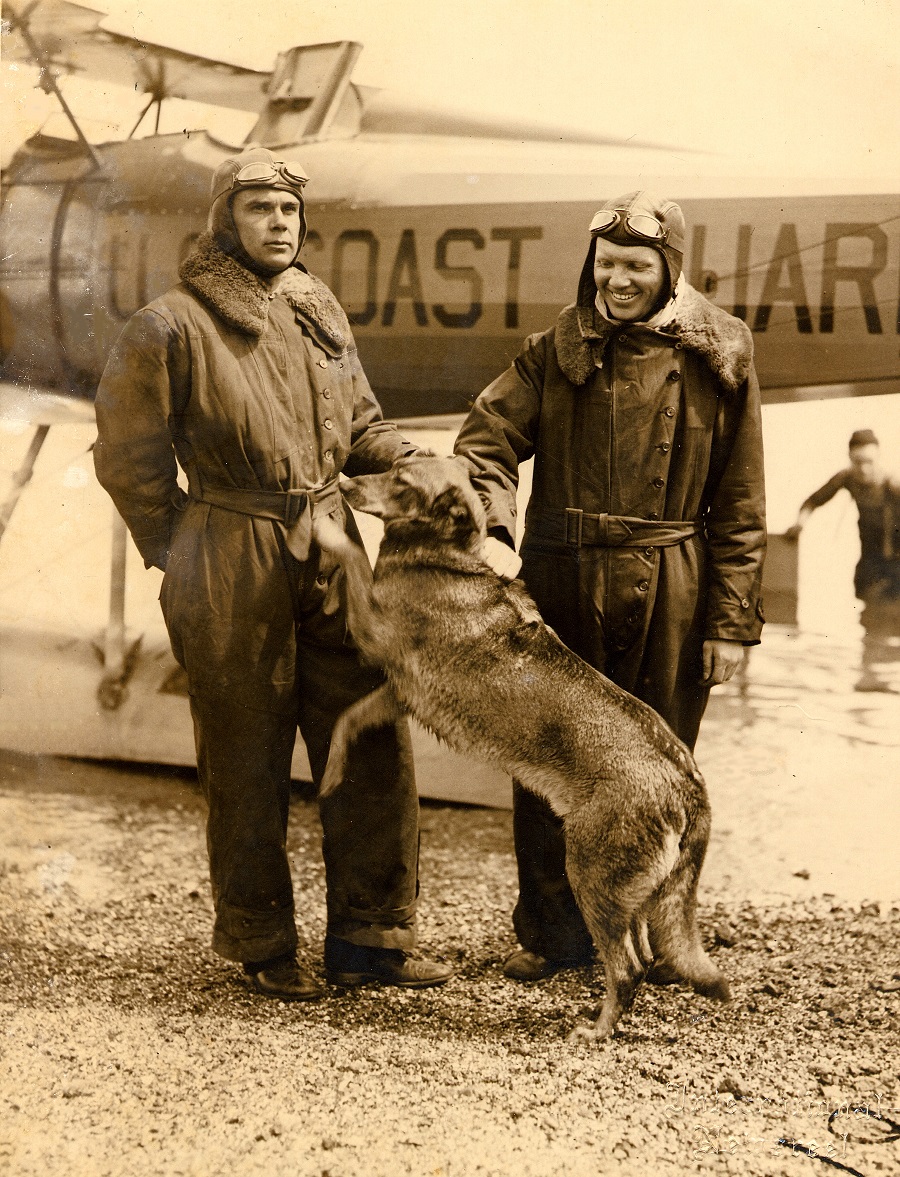The Long Blue Line: Capt. von Paulsen’s New Year’s Day Rescue

Ninety years ago, on Sunday, New Year’s Day 1933, Lt. Cmdr. Carl Christian von Paulsen started out on what would become one of early Coast Guard aviation’s best-known search and rescue cases.
 Descended from German nobility, Carl Christian von Paulsen (far left) graduated from the Revenue Cutter Service Academy in 1913 and received his commission as a third lieutenant in the service. At the end of 1919, he began a series of flight schools that would result in his becoming one of the most highly trained aviators in the service. In 1920, he graduated from the Navy’s flight school with the designation of Naval Aviator (Seaplane) and received the designation of Coast Guard Aviator #6.
Descended from German nobility, Carl Christian von Paulsen (far left) graduated from the Revenue Cutter Service Academy in 1913 and received his commission as a third lieutenant in the service. At the end of 1919, he began a series of flight schools that would result in his becoming one of the most highly trained aviators in the service. In 1920, he graduated from the Navy’s flight school with the designation of Naval Aviator (Seaplane) and received the designation of Coast Guard Aviator #6.
One of von Paulsen’s first aviation assignments would alter his career and the course of Coast Guard aviation. In 1924, after completing a tour on the new Cutter Tampa, he assumed command of Coast Guard Section Base 7, located at Gloucester, Massachusetts. In his three-and-a-half-year tour of duty, von Paulsen re-established Coast Guard aviation using a borrowed U.S. Navy Vought UO-1 seaplane and waterfront property to improvise a small air station. With the UO-1, von Paulsen proved the value of Coast Guard aircraft for spotting rum runners and carrying out search and rescue missions. Thereafter, aviation remained a permanent branch of the service. Establishing Coast Guard aviation on a permanent basis proved a monumental step in the history of the service and military aviation in general.
On Sunday, Jan. 1, 1933, at around 11:30 a.m., Coast Guard Air Station Miami received a request for assistance from the Chester Shoals Coast Guard Station. A young man named Paul Long had been blown offshore in a skiff just inside Cape Canaveral at 10:00 p.m., the previous night. The Coast Guard seaplane Arcturus left the air station at 12:20 p.m., with von Paulsen at the controls. Arcturus was one of the rare Coast Guard aircraft to receive a name rather than a numeric designation
The Arcturus proceeded to Cape Canaveral through rainy, squally weather. Von Paulsen flew Arcturus in wide circles looking for craft, but saw none. The nearest Coast Guard craft was 85 miles distant. Only an hour-and-a-half of daylight remained. Close examination showed that Long and his boat were in poor shape. The squall was increasing. If the man were not picked up before dark, it would be impossible to do so until the next day.
The crew lightened the plane by dumping the surplus fuel. A water landing was made waves of 12 to 15 feet high, twice as high as the seaplane was designed to land on. Impact with the water caused the left wing tip float struts to collapse, leaving the float banging against the wing. The aircrew had to ride on the wing in an extremely precarious position to maintain an even keel. At times, the men became semi-conscious from inhaling gasoline and tetrachloride fumes. One crewmember, Radioman Third Class Thomas McKenzie dived overboard to clear the wingtip float, then retrieved the drifting man and both were brought aboard the plane.
An attempt was made to take off, but it was impossible to keep the damaged wing level. Consequently, a second water landing was made that wrinkled the hull under the forward spar. Von Paulsen attempted to taxi to shore, but was unsuccessful.
The rescue turned into a struggle for survival not just for the victim, but for the aircrew as well. After the second water landing, the engines stopped and a sea anchor deployed. The heavy seas carried away the sea anchor line and the anchor lost. Next, the crew sent out an SOS message, improvised another sea anchor and rigged a pole antenna. Meanwhile, von Paulsen’s plane continued to drift until 1:00 a.m., when it passed through three lines of heavy surf and beached on shore. The crew and survivor went ashore and U.S. Customs Border Patrol officer found them later. Through his dogged determination and aviation skills, von Paulsen completed the first aviation rescue to receive the Gold Lifesaving Medal demonstrating the importance of aviation for Coast Guard search and rescue operations.
In addition to his vast aviation background, von Paulsen was an experienced Arctic sailor. During the first part of World War II, he served as deputy commander of the Coast Guard’s Greenland Patrol. After the Greenland Patrol, von Paulsen began the final chapter of his Coast Guard career. Beginning in 1943, he served aboard Coast Guard-manned troop transports, including the USS Samuel Chase and USS General George M. Randall. In 1944 and early 1945, his ship ferried Allied troops between ports in the Pacific and Indian Oceans. The highlight of this assignment was the humanitarian mission of carrying 5,000 Polish war orphans to a new home in New Zealand.
For his invaluable contributions in Coast Guard aviation, Prohibition enforcement, wartime Arctic operations and troop transport commands, von Paulsen received the Navy’s Legion of Merit Medal, Denmark’s Cross of the Order of Dannebrog, numerous World War I and World War II campaign ribbons, as well as his Gold Lifesaving Medal.
William H. Thiesen, Ph.D. is the Coast Guard's Atlantic Area Historian. This article appears courtesy of U.S. Coast Guard News and may be found in its original form here.
The opinions expressed herein are the author's and not necessarily those of The Maritime Executive.

